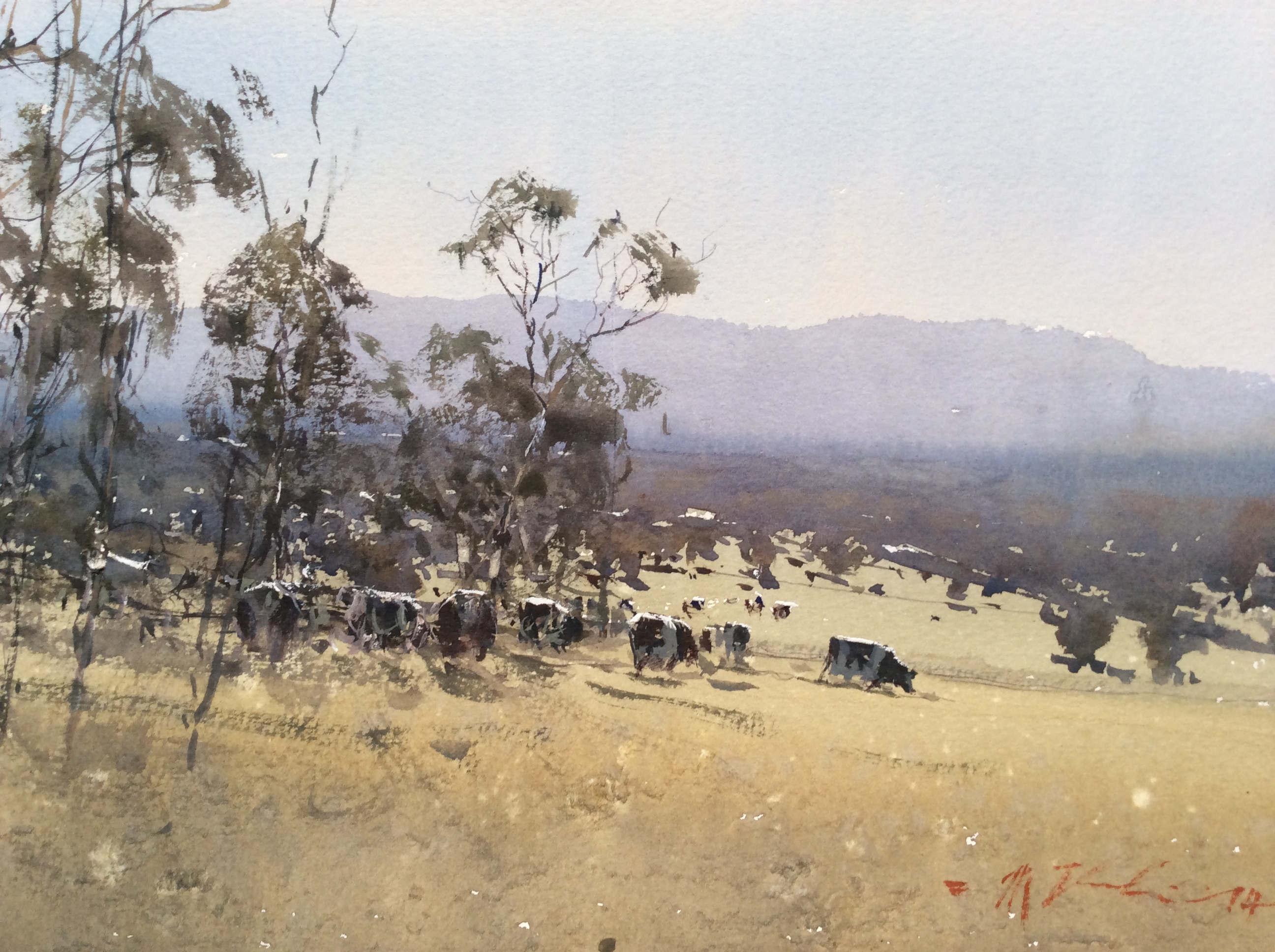
Once he sets up to paint en plein air, Australian watercolor artist Joseph Zbukvic launches directly into his painting. “Years ago I used to do thumbnail sketches,” he says, “but now I just see it.” He begins with one or two very thin washes. “It’s a two-step process,” he says. “Firstly, I lay on a fairly faint wash of color that permeates through an area, usually a sky and a ground wash, which I call ‘heaven and earth.’ I let that dry, then place the major shapes on top of that wash, allowing it to show through. Say I’m out in the country, I’ll paint the sky down to the horizon with a faint blue and then I’ll paint a thin green over the fields, leaving some white areas for buildings or roads or whatever. For the second layer, I’ll come back around the buildings and develop the color.”

With a streetscape, the artist follows a similar attack, washing in the sky and road surface, and then placing cars, street furniture, and people on top of that. “I have to be careful to leave any whites that I need unpainted,” he says, “perhaps areas for roofs, windshields, or reflections. So I paint around them, making negative shapes. In the second layer, I come in with a stronger wash and then finish with the darkest of darks.”

The need to preserve white areas in watercolor paintings means that the artist must always plan ahead. “Watercolor is a strange process where quite often the major feature in the composition, lets say it’s a ship at a dock, is often the last thing to be put in the painting. First, I paint the background and foreground, and then get involved in that big shape last. I have to see things in my mind’s eye ahead of time and avoid doing things that will interfere with it. I can’t have lines, say a horizon line, running through elements that have to feel solid. Lines will always come through. So I’ve got to be very careful, there’s no going back.” It’s a process that Zbukvic likes to compare with performing surgery. “One wrong cut and the patient dies,” he says. “While the painting is wet, I can get a tissue and mop off the paint and get rid of it. Once it’s dry, then I have that edge, and there isn’t really a good way to get rid of it. Some people try scrubbing, but you can always see the damage. So painting in watercolor is a kind of strange dance between being a visionary and romantic, and shooting for that feeling of spontaneity, while at the same time having to calculate everything and be technically perfect.”
Join Joseph Zbukvic and other top watercolor artists, including Keiko Tanabe, Dan Marshall, and Shuang Li at the 2019 Plein Air Convention & Expo.








It was wonderful to see the early paintings of Notre Dame in its glory.Thank you.
I particularly enjoyed reading Joseph’s remarks while visualising his comments in my head.A great Artist .Such beautiful paintings.